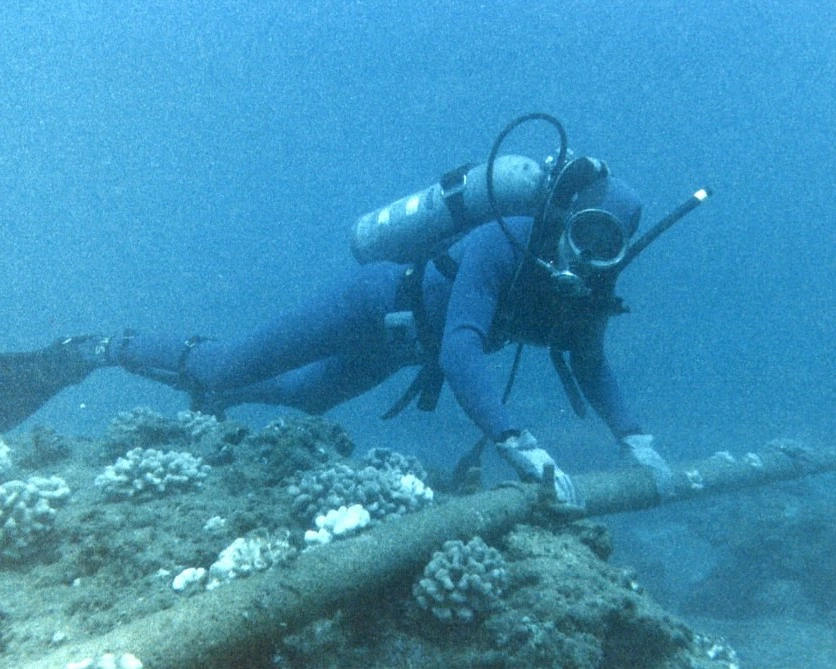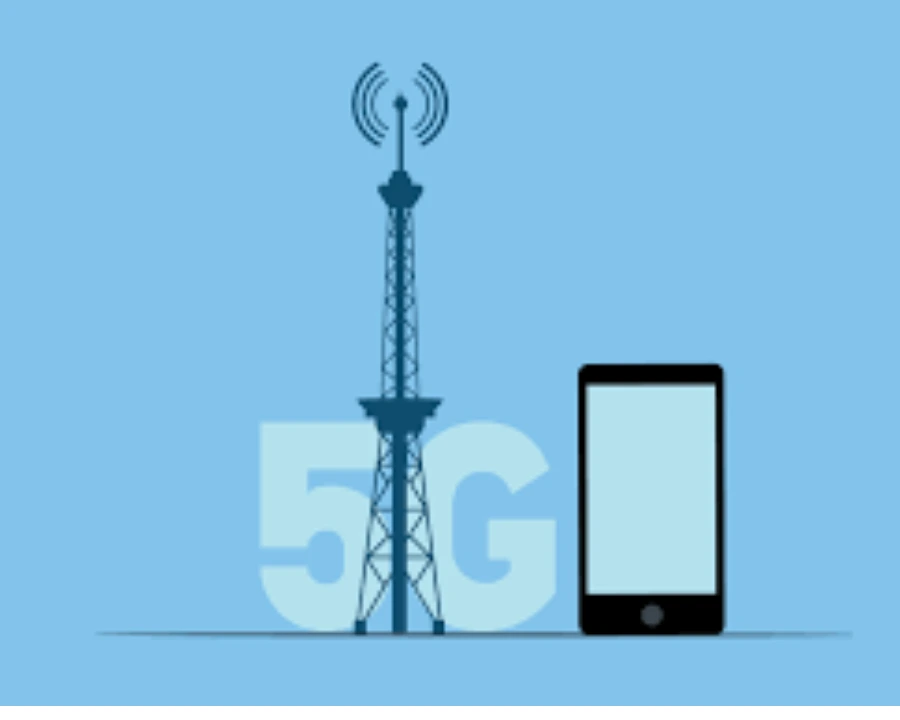If a shark bites the internet cable at the bottom of the sea, how is it repaired? Above all, how do we know where the cable is broken in thousands of miles of sea? Today, the entire global tech system is connected to the internet and 99% of the internet traffic passes through the hidden cables at the bottom of the sea. A traffic highway that we use every day but cannot see. In today’s article, we will try to know some things related to the internet cable. So let’s start.
5) Expandition

The network of undersea internet cables is so large that it connects all the continents. These cables are laid at a maximum depth of 8000 meters. Where the pressure is as much as 5300 kg per square inch. This is like putting the weight of an African elephant on the smallest finger of a human foot. Under such high pressure, the smallest part of the undersea cables is passing under the Black Sea between Azerbaijan and Turkmenistan. Whose length is about 300 km and the largest part is 6600 km long which is named Maria Cable. It starts from Virginia Beach in America and passes through the dark depths of Atlantic Ocean and ends at Bil Bau in Spain.
If we talk about the internet cables laid in all the seas of the world, then the total length of all these is more than 14 lakh kilometers. So much that if these cables are wrapped around all the planets of our solar system and their moons, then still enough cable will be left to wrapped around the Earth once again.
4) Need

Now it is obvious that laying such long internet cables, that too at a depth of 8000 meters in the sea, is not an easy task. Laying just 1 km of submarine cable costs a maximum of 25 lakh US dollars. So now you yourself can guess how much it would have cost to lay 14 lakh kilometers of cable. But after all, what was the need to do all this. In today’s era, this can be done with the help of satellites to keep the whole world connected wirelessly.
Actually, there are 493 submarine cables in the whole world. Each of these internet cables can handle 4000 tera bits of data in just one second. Understand it this way that 8 crore people can stream a 4K movie simultaneously on just one cable. In contrast, if a satellite does the same work, then only 24000 people will be able to watch the same 4K movie simultaneously on one satellite. Now, to meet the demands of the people, more and more satellites will have to be installed. Which will cost more and more maintenance.
Compared to submarine cables, the maintenance of satellite is more costly and difficult. If due to any reason a major fault occurs in the satellite, then 40 crore US dollars will have to be borne to replace it. This is the reason why laying a internet cable of lakhs of kilometers under the sea is easier than satellite or wireless connectivity.
3) Work

Crores of gigabytes of data are traveling all the time in this undersea highway. This means that this highway will be quite wide. This means that these internet cables will be thicker than a common household fiber optic cable. But this is not so, this fiber optic cable is as thin as a hair. So now the question arises that how so much data is sent through such a thin wire. This hair-sized wire is called the core of fiber optic. Which is made of glass or plastic. Light passes through it which travels carrying the data in small packets.
First of all, the data present in the computer is converted from electrical signal to light signal with the help of a transmitter. The transmitter does this work through laser light or LED. This light signal is transmitted or sent in the form of pulse. Which has only two parts, ones and zeros. Light pulse represents one and when there is no pulse, it represents zero. It is the job of the core to take these pulses from one place to another. Light travels through it.
There is a layer outside this core. Which is called cladding. This layer prevents the light from coming out of the core. Even if the light tries to come out of the core, the cladding makes it bounce back inside the core. This process is called total internal reflection. Now this light signal becomes weak at a greater distance. For which a repeater is installed after every 100 kilometers. Which boosts the light signal. To complete this part, a layer of copper is placed on the core and cladding, in which a DC current of 10000 volts is sent.
There is no power source in the middle of the ocean. That is why the current passing through the copper layer is used to power these amplifiers. Fiber optic cables have the ability to transmit more than one signal simultaneously. This technique is called Wavelength Division Multiplexing or WDM. Light of different colors is passed through fiber optic simultaneously and each color of light contains different data packets. As you know that the speed of light is 1079 million km/h. That means this data travels from one place to another in the blink of an eye at the speed of light.
On reaching thousands of kilometers away, this data is converted back into electrical signals with the help of photodiode or photo detector and then the computer or mobile device reconstructs it and brings it in graphics or any other form. Apart from the core, cladding and copper layer, the reason for the submarine being thick is the presence of 7 more layers on it. Whose job is to protect the internet cable from the extreme pressure of water.
2) Installation

Let us tell you here that today’s modern submarine cables are 1 inch thick and the weight of 1 kilometer cable is about 1400 kg. For installation in the sea, thousands of kilometers of such cables are installed in one piece on the bottom of the sea with the help of special ships. According to an estimate, it took about 2 years to install the 6600 km internet cable laid between the US and Europe.
After complete research, a specific area is selected. So, large rolls of internet cable are loaded on a ship and brought to that location and a special robotic machine which has the capability to walk on the floor of the sea is used to dig the floor upto 1 meter. Along with this, the cable is laid in it. This is a very slow work. It is very important to do it with great caution.
When the internet cable kept in one vessel ends, then another vessel filled with cable is brought and the work of laying is carried forward by connecting the corner of the first cable with the new cable. The biggest obstacle in this entire work is the weather. Strong winds are present in the Atlantic Ocean 365 days a year and no one can stop these winds from taking the form of a sea storm. Due to strong storms, the installation work is paused there for many days. Until the weather clears.
1) Damage

Internet cables get damaged due to earthquakes, shark attacks and volcanic eruptions inside the sea. But the biggest reason for damage to submarine cables is fishing. Some vessels hunt fish living at the bottom of the sea with a trawl door. A rope is attached to it. Which is directly connected to the vessel. This trawl door is sent to the bottom and dragged on the ocean floor and then the fish get trapped in it. When this trawl door is accidentally thrown at the place of a submarine cable, then the cable gets damaged due to the dragging.
Now here only one question must be coming to your mind that if submarine cables get damaged at the bottom of such a large ocean, then how are they repaired. How is the location of where the thousands of kilometers of internet cable has been damaged known? There are data centers at both the end points of the submarine cable. Who monitor the activity of the cable all the time. As soon as the connection of both breaks, it means only one thing that the cable has broken in the middle of the sea.
A special device is used to find out where the internet cable of thousands of kilometers is damaged. Which is called Optical Time Domain Reflectometer. This device sends a light pulse from both the ends and due to the breakage of the cable, that light pulse bounces and comes back. The time taken by the returning pulse to come back is used to estimate exactly after how many kilometers the damage is in the cable. The same process is done from both the ends and it is verified whether the location of both is the same or not.
Now the DC supply i.e. the current released in the cable is turned off from both the ends and ROVs are sent to the bottom of the sea at that location. With the help of ROVs, the internet cable is first physically inspected and then the cable is taken out and brought to the vessel present above. That part of the cable which is damaged. It is cut and another piece is inserted in it. Since the core of fiber optic is made of glass, this work has to be done very carefully so that one glass joins with the other just like it was in one piece. This process is called splicing.
List Facts of Internet Cable
- Expandition
- Need
- Work
- Installation
- Damage
Top5 Secret Points Of Jeff Carpoff’s Story